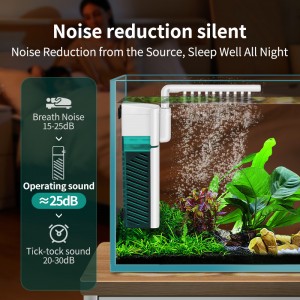A loud filter can be a significant source of irritation, especially if it’s disrupting your peace and quiet. Whether you’re dealing with a noisy water filter, or any other type of filtration system, there are several steps you can take to address the issue and restore some tranquility to your space.
1. Identify the Source of the Noise
The first step in solving the problem is to determine where the noise is coming from. Filters can produce noise for various reasons, such as loose parts, blockages, or even the filter material itself. Take some time to observe your filter in action. Is the noise coming from the motor? Is it a rattling sound that suggests something is loose? Or is it a continuous hum that might indicate a blockage? Identifying the specific source of the noise will help you narrow down the possible solutions.
2. Check for Loose Components
One common cause of excessive noise in filters is loose parts. Over time, vibrations and wear can cause screws, bolts, or other components to come undone. Inspect your filter carefully to see if any parts appear to be loose. Tighten any screws or bolts that you find. If you’re not sure how to do this, consult the user manual for your specific filter model. It will usually provide detailed instructions on how to access and secure the various components.
3. Clean the Filter
A clogged filter can also be a source of noise. When the filter is dirty or blocked, the motor has to work harder to push air or water through it, which can result in louder operation. Regular cleaning is essential to keep your filter running smoothly and quietly. Remove the filter from its housing and clean it according to the manufacturer’s recommendations. For water filters, you may need to rinse them thoroughly under running water. If the filter is particularly dirty or has been in use for a long time, it might be worth replacing it altogether.
4. Inspect the Motor
If the noise seems to be coming from the motor itself, there could be a problem with the motor’s bearings or other internal components. In this case, it’s best to consult our professional technician.We can diagnose the issue and recommend whether the motor needs repair or replacement. Attempting to fix a motor yourself can be risky and may void the warranty on your filter.
5. Consider Upgrading to a Quieter Model
If your current filter is consistently too loud, it might be time to consider upgrading to a quieter model. Modern filters are often designed with noise reduction in mind, using advanced technologies and materials to minimize sound output. When choosing a new filter, look for models that are specifically labeled as “quiet” or “low-noise.” Read reviews from other users to get an idea of how well the filter performs in terms of noise reduction.
6. Regular Maintenance
To prevent future noise issues with your filter, it’s important to establish a regular maintenance routine. This includes cleaning or replacing the filter as needed, checking for loose parts, and ensuring that all components are in good working condition. By taking care of your filter, you can extend its lifespan and keep it running quietly.
In conclusion, dealing with a loud filter can be frustrating, but there are several effective solutions available. By identifying the source of the noise, addressing any issues with loose parts or blockages, and considering upgrades or noise-reducing materials, you can significantly reduce the noise level and enjoy a more peaceful environment. Regular maintenance is key to keeping your filter in optimal condition and preventing future noise problems.
If you want to learn more about this, please contact our website https://www.jingyeaquarium.com/.
Post time: Apr-21-2025

